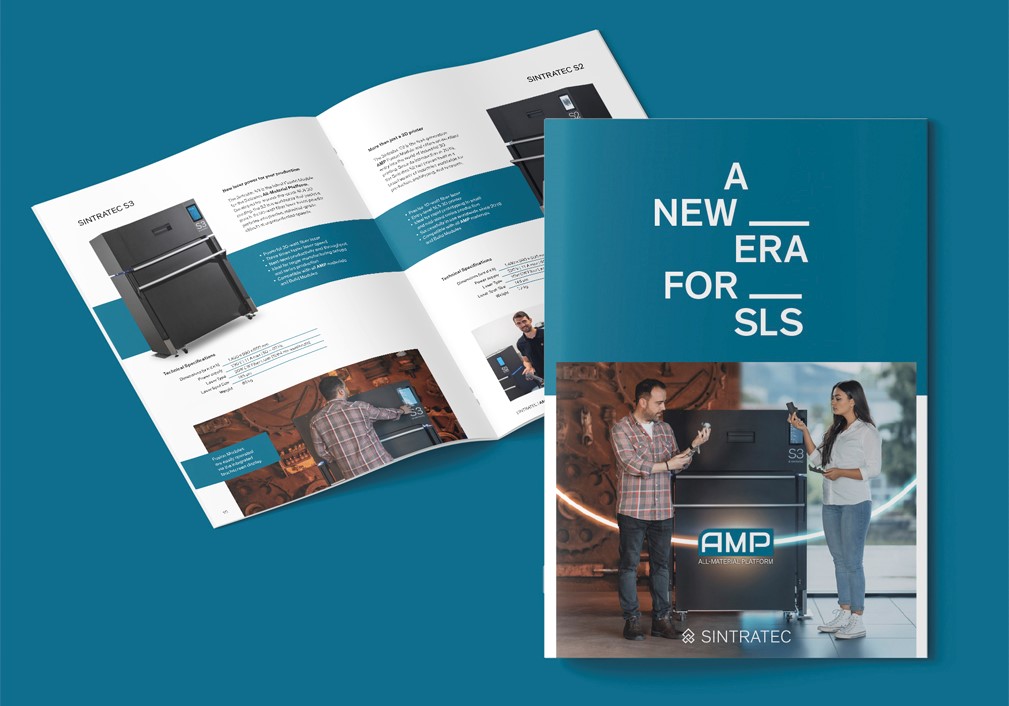SLS supports research on hybrid materials
The Hybrid Materials Laboratory at the University of Applied Sciences and Arts of Southern Switzerland (SUPSI) is developing new composite materials. In addition to a wide range of production and analytical equipment, the Ticino researchers also make use of a Sintratec Kit.
Advanced material research
Gas-cooled sandwich structures
Professor Ortona’s team is researching such ceramic hybrid materials for extreme conditions. For the EU research project THOR, for example, his institute developed complex sandwich structures made of ceramic composites that are cooled with gas flows. This enables the thermal behavior of structural components of future space vehicles to be controlled using active “Thermal Protection Systems”.
The research of the world-renowned university is on the engineering of special material combinations, including combinations with air – i.e. porous materials. These include modern structural components through which gases or liquids flow, and which are installed in heat exchangers, heating burners, solar systems, catalytic converters or water filtration systems.
SLS allows complex designs
The so-called Ceramic Matrix Composites (CMC) are particularly suitable for thermally stressed components. Such lightweight lattice architectures represent a class of high-quality intricate components thanks to their high mechanical properties. Their production is often only possible through additive manufacturing.
The Hybrid Materials Laboratory has been using 3D printers for 15 years. Stereolithography (SLA), which has so far been the most widely used, is now reaching its limits, especially for complex designs such as gyroids. Further, the production of porous polymers is not possible. To get rid of these weak points, the MEMTi institute looked around for alternative 3D printing processes and came across selective laser sintering (SLS).
Porous structures made of Sintratec PA12
Thermally stressed grid structures must not only be stable and lightweight, but also require functional properties. Up to now, exhaust gas flows in catalytic converters, whether in cars or industrial plants, have been plus-minus linear. However, filtering action is more efficient when the emission gases touch as much substrate surface as possible. The solution lies in innovative geometries that mix-up the exhaust gas stream.
Sacrificial templates for complex ceramic structures
The MEMTi also focuses its attention to the engineering of ceramic hybrid materials, which are realized using structural templates made of Sintratec PA12. Professor Ortona continues: “We call them sacrificial templates”. The term explains the sophisticated manufacturing process: The polymer template printed in 3D via SLS is coated with a ceramic paste, after which the polymer burns during the subsequent heat treatment. The result is a hollow, ultra-light and highly stable ceramic component. These structures are now produced industrially by the Swiss company EngiCer SA.
Oscar Santoliquido, research assistant at MEMTi, adds: “Thanks to the open parameters of the Sintratec Kit, we were able to define the 3D-printed objects with the best properties required to apply the ceramic coating optimally to the template. The SLS technology allows us to create complex grid structures quickly and easily.”
Additive manufacturing as a game changer
In the future, however, the complex ceramic structures will be produced directly through additive manufacturing. “We will benefit more and more from the possibilities of additive technologies,” sums up Professor Ortona. The fact that 3D printing is helping to create new engineering paradigms is particularly evident in the field of hybrid ceramics.
“We will benefit more and more from the possibilities of additive technologies.”
Professor Alberto Ortona
Director of the Hybrid Materials Laboratory
Institute for Mechanical Engineering and Materials Technology (MEMTi) at SUPSI




